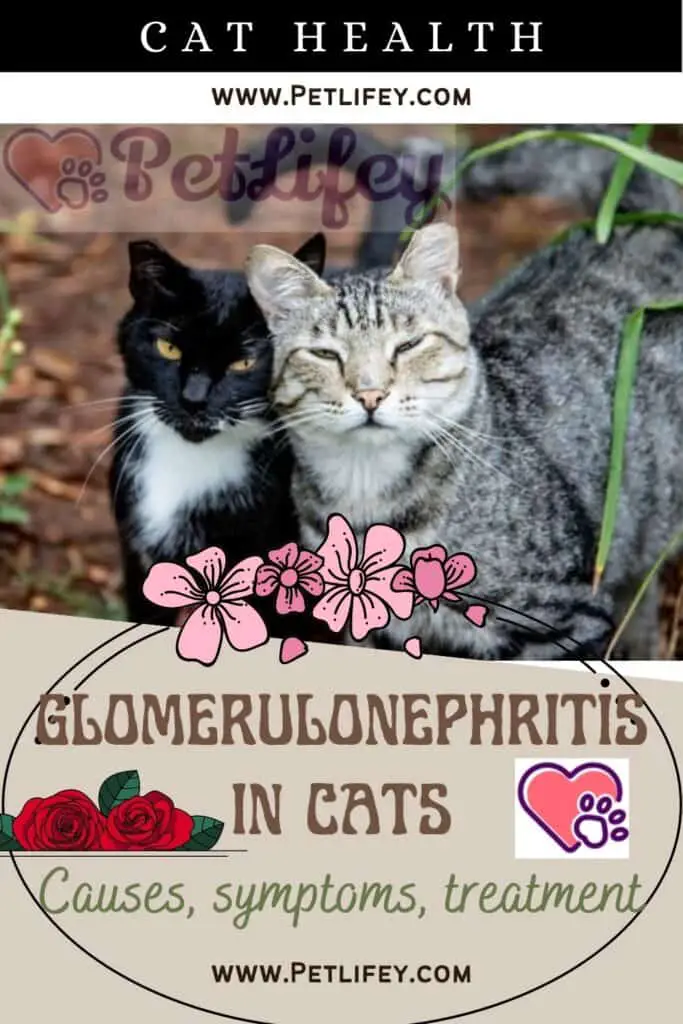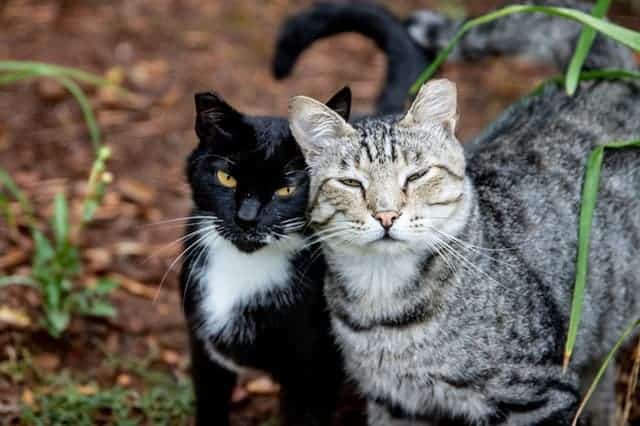Glomerulonephritis in cats is a kidney disease that can affect our cat. Let’s see what the causes, symptoms and treatment are.

Glomerulonephritis in cats is inflammation that occurs in the microscopic filter units of the kidneys (glomeruli).
This condition develops when complexes of antibodies and antigens (called immune complexes) get stuck in the glomeruli.
This activates the inflammatory defense system of the organism which, in turn, damages the glomeruli or the filtering units of the kidneys.
Causes of glomerulonephritis in cats
Although the causes of glomerulonephritis in cats can be many, it can happen in some cases that we are not able to identify it and this condition is defined as “idiopathic”.
- Brucellosis (an infectious disease)
- Dermatitis ( skin infection)
- Ehrlichiosis (an infectious disease transmitted by ticks)
- Endocarditis (infection of the heart valves)
- Rocky Mountain Fever (another tick-borne disease)
- Heartworm disease
- Gingivitis (gum infection)
- Bacterial infections
- Chronic fungal infections
- Viral infections
- Lyme disease in cats
- Feline infectious peritonitis ( Coronavirus)
- Pyometra (infection of the uterus)
- Feline Immunodeficiency Virus (FIV)
- Feline leukemia virus (FeLV)
Symptom

Unfortunately, just as with various diseases, even in glomerulonephritis in cats, it can happen that the animal does not show any type of symptoms.
In these cases, the discovery of the disease occurs during a routine check-up or through a urinalysis of the cat who have proteinuria (an excessive amount of protein in the urine).
In other cases, however, the symptoms that may occur are:
- swelling of the legs, snout, hocks or scrotum in males or abdominal swelling caused by a collection of fluid in the abdomen (causing subcutaneous edema)
- acute onset of blindness due to retinal detachment or retinal haemorrhage (cause of systemic hypertension)
- rapid or labored breathing, rapid heart rate and high body temperature (due to a sudden blockage of blood vessels due to a blood clot
- poor appetite
- lethargy
- weight loss in cats
- bad appearance of the coat
- excessive urination and excessive water consumption (cause of chronic kidney failure)
- signs of an infectious, inflammatory or cancerous state
With regard to the symptoms listed above, as we have seen, these are signs that can be found in various pathologies, it will therefore be necessary to exclude these conditions before issuing a definitive diagnosis.
Diagnosis and treatment of glomerulonephritis in cats
In order to make a precise diagnosis of glomerulonephritis in cats, the veterinarian will have to use diagnostic tests to identify any mast cell tumors and to rule out other diseases that can cause similar symptoms.
Before proceeding with specific tests, however, the veterinarian will proceed with the medical history and a scrupulous physical examination. Then he will carry out the following exams:
- complete blood count: to evaluate for anemia, inflammatory process, infection, or low platelet count
- serum biochemical profile: to evaluate the presence of low serum albumin and high serum cholesterol concentrations.
- urinalysis: to identify the presence of proteinuria and evaluate the cat’s renal function
- urinary protein / creatinine ratio: to quantify excessive protein loss in the urine and determine if the proteinuria is severe enough to warrant the suspicion of glomerulonephritis.
- special antithrombin III serum concentration test : to assess the risk of thromboembolism or blood clot in cats with glomerulonephritis
- tests for filariasis and other tests: to look for the presence of antibodies and antigens in the serum (such as borrelia and ehrlichia) in order to identify any underlying infectious diseases that can cause glomerulonephritis;
- tests for the function of the immune system
- fine needle aspiration of a joint
- microscopic analysis of the liquid withdrawn if the presence of immune-mediated polyarthritis is suspected
- chest and abdominal radiographs : to identify underlying infectious, inflammatory or neoplastic diseases
- abdominal ultrasound examination : to evaluate the kidney structure and other internal organs, such as the liver and spleen
- kidney biopsy : for the collection of an adequate tissue sample
All these tests will allow the veterinarian to evaluate the general health of the cat and the possible effects of glomerulonephritis on other body systems and evaluate the appropriate treatment for the case.
Treatment
Regarding the therapy planned for glomerulonephritis in cats, the veterinarian will act by trying to eliminate the disturbing antigens, whether they are infectious agents or tumor antigens.
In the event that the underlying antigen cannot be identified, treatment for idiopathic glomerulonephritis can include:
- Immunosuppressive drugs (to suppress the formation of antibodies and the production of antigen-antibody complexes)
- a very low dosage of aspirin (always under medical prescription)
- adequate nutrition (low in protein and low in sodium)
- angiotensin converting enzyme inhibitors (ACE inhibitors)
- antihypertensive drugs
- diuretics
The prognosis is very variable, however if the function remains relatively normal, a decrease in the urinary protein / creatinine ratio is to be considered a positive sign that indicates a clinical improvement and resolution of the disease with adequate times.






